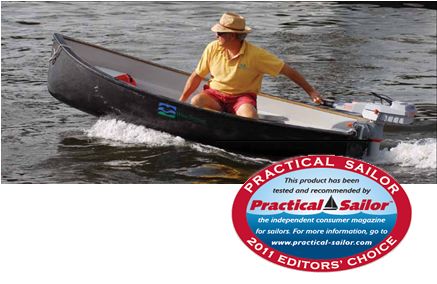
Photos by Ralph Naranjo
387
It’s time once again for Practical Sailor editors to announce the year’s top picks with our Gear of the Year (GOTY) roundup. Each year, as the fall boat shows—and the deals that come with them—appear on the horizon, we pore over the numerous products we’ve reviewed in the previous 12 months to select the cream of the crop for our Editor’s Choice awards. We hope the list will help readers better navigate any boat-show or end-of-season shopping. This year, we picked from the Best Choice products evaluated in the September 2010 through August 2011 issues, and here … drum-roll, please … are the 2011 GOTY awardees:
Electric Outboards
Over the years, we’ve seen big strides in the electric outboard market. While the pragmatist looking at dollars-per-knot or range prior to refueling may not think it’s time to switch to electric propulsion, making the move away from oil-based power has many benefits: better air quality, less noise, lighter weight, and best of all, no more filling the tanks with expensive or ethanol-blended fossil fuel.
In our January 2011 look at electric outboards, we reviewed two Torqeedo engines, the new Travel 1003 and the previously PS-tested Travel 801, and the Electric Paddle. We tested the trio on various boats, including a 10-foot Avon inflatable and Wing Systems rigid dink. All are suitable for inflatables, dinghies, and small sailboats.
Testers were impressed with the Torqeedo Travel 1003, which proved to be a significant upgrade to its predecessor, the T-801. With 30 percent more battery power, plus an increase in thrust and efficiency, the new unit is even more user-friendly. Rated as a 3-horsepower outboard, the 7-pound motor has a beefed-up, well-engineered bracket to clamp it to the transom, and both the tilt adjustment and the battery support are more ruggedly structured. Instrumentation (charge level, speed, and GPS position) has been added, and everything from the control handle to the cabling has been rethought.
We tested the new Torqeedo on a light, round-bilged Wing Systems rigid dinghy that literally leaped to life with a twist of the wrist. The dinghy planed instantly.
At full throttle in flat water on a 10-foot inflatable, the 13-Ah battery has a range of 2.1 nautical miles; half-throttle range is 6 nautical miles; and at low speed, it’ll run for about 11 miles.
Testers gave the lightweight, thrust-efficient T-1003—which comes with a two-year warranty and a $1,899 price tag—two thumbs up and named it the Editor’s Choice in electric propulsion. (Since our test, Torqeedo has made some improvements to the T-1003, including the ability to solar charge its batteries.)
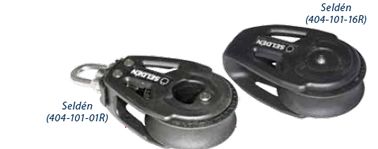
378
Bullet Blocks
Testers reviewed a batch of 40-millimeter blocks for our June 2011 report, including blocks from Barton, Garhauer, Harken, Karver, Holt, Ronstan, Schaefer, and Seldén. All of the units tested were ball- and/or roller-bearing designs, and the trend toward more composite material and less metal was evident.
To test the 13 blocks, we loaded the line and blocks with 200 pounds of tension and measured how much force it took to move the line in the closed-loop arrangement. Testers also immersed the blocks for a week in a heated, aerated saline bath devised to accelerate oxidation, crevice corrosion, and dissimilar metal corrosion.
The test came down to the wire with the Harken and Seldén blocks holding the judges’ divided interest. Both scored respectably in every aspect and proved to be non-magnetic, corrosion free after the soaking test, and close in the under-load pull test.
It was hard to pick a winner, but in the end, the decision went to the block with slightly less friction. The Best Choice honor and Gear of the Year award went to both the Seldén tie (404-101-16R) and swivel (404-101-01R) blocks.
The Seldén 40-millimeter blocks are a testimony to the company’s commitment to stainless ball-bearing efficiency and long-term reliability. The block frame is a glass-fiber/polyamide injection-molded composite that’s more metallic than other products tested. The roller bearings are stainless-steel as Seldén prefers metal because it won’t deform under load or heat, and the alloy they choose is very corrosion resistant.
Options include a block with no shackle; a lashable, molded model; or a pinned-together conventional swivel design. The swivel version also has a neat removable, molded insert that slips over the shackle clevis and locks the shackle in one plane, moving only when it is advantageous to do so.
The Seldén blocks, both rated for a 550-pound safe working load and rope sizes up to 3/8 inches, were the smoothest, low-friction blocks tested. The tie version costs about $22, and the swivel runs about $28.
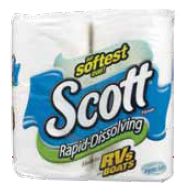
189
Rapid-Dissolve Toilet Paper
Our in-depth coverage of marine heads this year (see “Systems Standouts”) would not have been complete without rolling out a test of quick-dissolving toilet tissues for use in marine toilets and on-board sanitation systems.
In the June 2011 issue, we tested 10 toilet tissues from seven manufacturers: Coleman, Dometic, Kimberly-Clark (Scott), Thetford, West Marine, Camco, and Charmin. All are relatively well-known brands and readily available from local marine and RV distributors, or retail outlets. All are touted as biodegradable, quick dissolving, and non-clogging.
The evaluation aimed to find out how quickly the different TPs dissolved in water, how strong they were, and how soft they felt. We used bench tests to determine the first two criteria, and multiple testers used the products “in the field” to get a feel for how soft each was. Testers also looked at paper thickness, price, and availability.
When all the scientific data was crunched, Practical Sailor tapped Scott’s Rapid Dissolving Tissue (made by Kimberly-Clark) as the best for use in marine heads and onboard sanitation systems. Made for RVs and boats, it was the fastest-dissolving product in our test. It wasn’t a very strong paper, but it got the job done. Sheets were relatively thick, and in terms of dollars per ounce, it was a pretty good value, costing $3 for four single-ply rolls (308 sheets per roll).
Any of the marine and RV fast-dissolving tissues we evaluated would be better for your on-board toilet than standard TP, but the Scott’s thorough and fast dissolving earned it a spot on our GOTY roster.
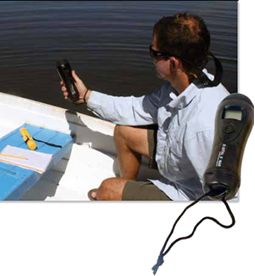
255
Handheld Depth Sounder
In the November 2010 issue, Practical Sailor tested two handheld depth sounders: the Hawkeye 22PX from Norcross Marine and the Depthmate SM-5A. While we’re usually loathe to apply a $100 battery-operated solution to a problem easily solved with a chunk of lead and some 3/8-inch line, we found during testing that these products take the leadline to the next level.
Resembling small flashlights, the sounders are designed to be portable, easy to use, and reliable. Yes, they require batteries, but they are only on for 10 seconds at a time, giving them an exceptionally long working life on one set of batteries.
The two units were tested over the course of three days in the Gulf of Mexico and near Sarasota, Fla., in depths less than 50 feet and in varying water conditions—from murky, shallow waters to deeper, clear waters. The units’ ability to read depths through hull materials was tested in clear waters of 10 to 20 feet. All readings were compared with simultaneous leadline soundings. Testers also exposed each to a series of durability tests involving cold, heat, impact, and immersion.
The Hawkeye 22PX is made of black, reinforced polyvinyl, and the sides of the transducer are protected by high-density synthetic rubber. Rated as waterproof to 200 feet, the Hawkeye floats, and it passed all durability tests with flying colors.
On the water, it performed very well, but the shoot-through tests turned up varying results. We did not register any depths through cored material, but we did get some readings through the thermoplastic Walker Bay and the fiberglass without immersing the sensor and by placing the unit firmly against the hull bottom.
To record the depth on the 22PX, the user presses a button below the small display once. This backlights the LCD screen and activates the sounder for 10 seconds. Its 3/4-inch-high digits are easy to read in bright sunlight, although polarized sunglasses did make for difficult viewing from an angle. Powered by four AA batteries, the Hawkeye has a claimed range of 199 feet.
The Hawkeye’s rugged construction and ease of use make it an excellent tool for gunkholing or for those cruisers who like to venture off the beaten path. The $90 Hawkeye costs less than half its competitor and outperformed the Speedtech in testing to earn a 2011 Editor’s Choice award.
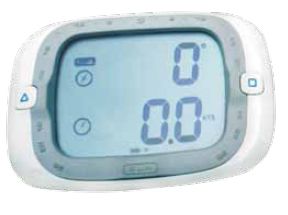
288
Handheld Performance Tool
Practical Sailor has been following the rise of a small company that caters to the speed freaks among us. Since 2005, Velocitek has been refining a rugged, battery-operated display designed to give GPS-based speed data to sailors so that they can get the best performance on the boat. We reviewed Velocitek’s SpeedPuck and its SC-1 in February 2010, but the company’s latest model, the ProStart, proved to be our favorite so far.
We pitted it against Rock City Marine’s Rock Box in a head-to-head test we reported on in the May 2011 issue. The products were evaluated on ease of installation, performance on the water, and durability. Testers also rated accompanying software. Both offer Windows-friendly software that allows racers to download and evaluate data, and we also tested Velocitek’s Mac software, Velocitool.
To evaluate installation and performance on the water, testers installed the units on a 1974 O’Day Javelin. On-the-water evaluations took place over the course of three days that saw sailing speeds from 1 to 9 knots.
Powered by three AAA batteries, the fully waterproof (IPX8) ProStart displays only essential performance data: time to start, distance to line, speed over ground, course over ground, and a graphic wind shift indicator. Small icons indicate battery level and mode.
The extremely intuitive interface relies on seven labeled buttons for each important function. At the top of the unit are buttons to select “start” or “race” mode, max speed recorded, power, reset, and +1 (to add minutes to the countdown timer). Two other buttons define the starting line. ProStart also will display distance to line and time-to-start. Other features include a tactical compass, countdown timer, speed over ground, course over ground, and a windshift indicator.
Testers found the $600 ProStart to be well-designed and easy to install and use. It offers racing sailors a technical edge over other sailors and an ability to replay, analyze, and share race data. Small-boat sailors looking for a fun device to track speed and improve their skills will also appreciate its portability. It was the clear winner among handheld speed tools, earning it a spot on the GOTY list.
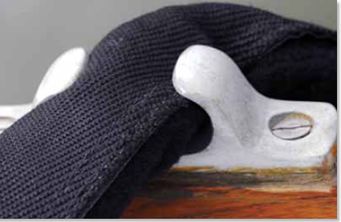
Top photo by Ralph Naranjo
341
Line Chafe Protection
The best type of chafe gear to rely on in a storm is one that has high resistance to abrasion, doesn’t cause heat build up in the line, can be easily installed—even when the line has already been deployed—and stays in place. Practical Sailor evaluated five products marketed for chafe protection on and around boats in the July 2011 issue. The test included products from marine manufacturers Davis Instruments, Fiorentino, Fjord Inc., and Taylor Made.
This round of testing looked at abrasion, construction quality, and design. Believing that abrasion resistance is the most important characteristic in a chafe guard, we tested each product on a jig we designed to simulate accelerated wear. We ended up using an angle belt sander and a constant load, can’tilevered jig that allowed us to do one minute-long, low-RPM runs on each product.
All five of the products we tested provided useful abrasion protection, but the handsdown winner was the Fjord Chafe-Pro (08-HB-02, sized for 1- to 2-inch lines)—a commercial product that holds just as much validity for the recreational sailor, in our opinion.
The Chafe-Pro uses a patented, heavy-duty nylon webbing and Velcro system. The 24-inch-long, heavy weight, quadruple-stitched webbing and double-locking Velcro end point make this product a cut above the competition, in our opinion. Despite its bulkier appearance, the Chafe-Pro was easy to install, took an angle change in stride, and fit into chocks with ease. It also shrugged off the belt sander’s assault and easily stayed locked tightly in place.
The Chafe-Pro’s comparatively higher price—$50 per guard—is a case of getting what you pay for, in our opinion. It was the only test product to earn an Excellent rating for performance, earning it a berth on our GOTY roster.
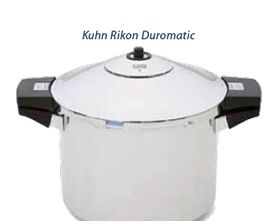
Top photo by Ralph Naranjo
268
Pressure Cooker
Our Gear of the Year galley pick is the Kuhn Rikon Duromatic spring-valve pressure cooker. Pressure cookers are the cruiser’s answer to the microwave. The versatile galley tool saves on cooking fuel, water, and time—and having a lid that’s locked on while cooking underway is a bonus. They also preserve flavors and nutrients better than microwaving or regular cooking.
In the December 2010 issue, we tested four pressure cookers from Presto, Kuhn Rikon, and Fagor. The test pots were limited to stainless-steel 4- and 6-quart models, but most are also available in other sizes. We opted against testing electric cookers as PS’s past cruiser surveys have shown that most onboard cooks opt for non-electric galley appliances.
For testing, we assembled and used the cookers according to their instruction manuals, cooking potatoes in each and then cooking a selected recipe from each pot’s accompanying recipe book. Testers also considered each cooker’s construction, ergonomics, user-friendliness, instructions, price, warranty, and the accessibility of customer help and spare parts.
After weighing all the data—and sampling all the food—the 6.3-quart Kuhn Rikon got the nod as the best pressure cooker. It performed flawlessly and earned Excellent ratings in every category but one: The 100-page cookbook earned only a Good as its recipes were somewhat labor intensive, requiring much preparation.
The Kuhn Rikon is extremely well made, with necessary safety and functional features, an encapsulated-aluminum base, and no unnecessary flare. The spring-valve system and double-red ring visual indicator allows for greater cooking accuracy, quieter cooking, and the ability to cook with less water and less steam, which retains more of the food’s nutrients and taste.
Testers found the Kuhn Rikon easy to set up and use, and although the tall, 9-pound pot is larger than others tested, its compact handles make stowing it easier.
The efficient and user-friendly Duromatic, carries a hefty $200 price tag, but it comes with a 10-year warranty and it’s a solid investment for cruisers and offshore passagemakers.




































